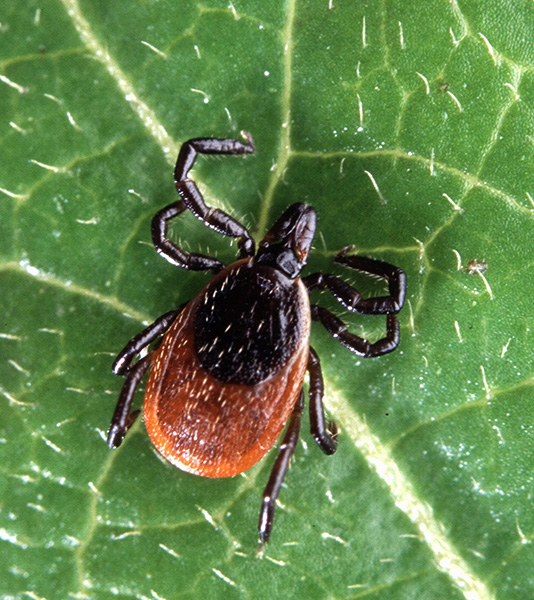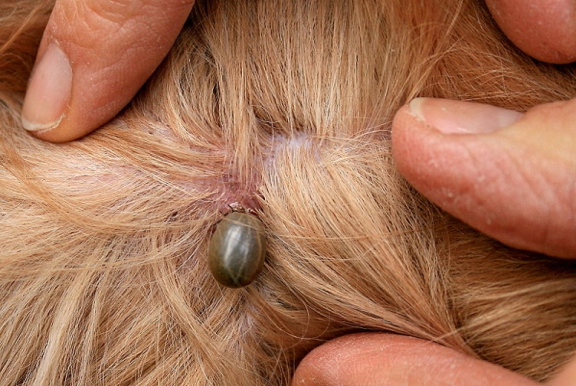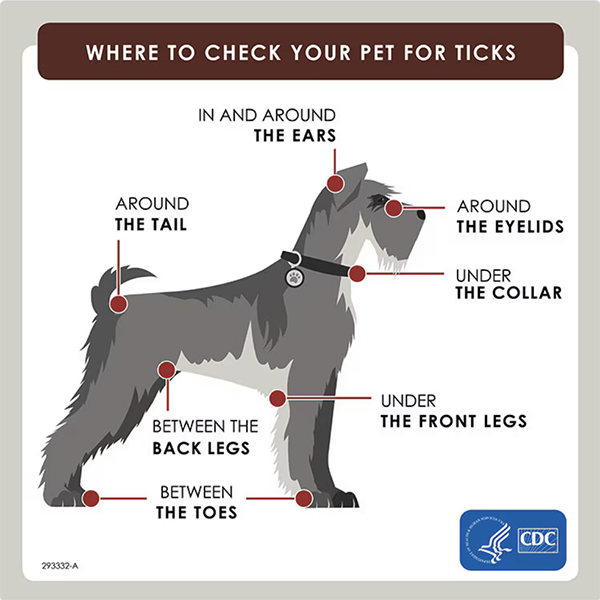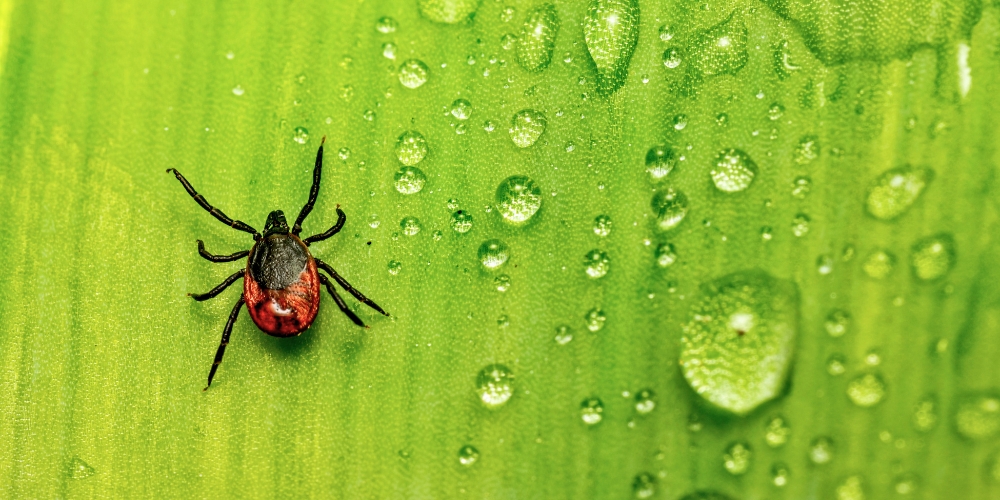It’s springtime, and summer is right around the corner! The birds are chirping, the dogs are barking, and the ticks are…ticking.

As the grass gets taller, Dr. Janet Jones of the Jasper Veterinary Clinic tells Albertans to watch for ticks.
While all ticks are gross-looking, some are more dangerous than others.
According to Jones, Dermacentor ticks, also known as the American dog tick, are the most common tick in Jasper.
The American dog tick carries bacteria that cause several human diseases, including Rocky Mountain Spotted Fever (RMSF) and Tularemia.
As you probably could have guessed, RMSF gets its name from where it was discovered – the Rocky Mountains.
However, unlike the Rocky Mountains, RMSF is a bad time. Unless the illness is caught early, it can be deadly.
Only three to five percent of RMSF cases are fatal if treated early. On the other hand, one in four people will die of RMSF if left untreated.
Short-term symptoms of RMSF include fever, nausea, headache, and spotted rashes (hence the name.)
Long-term health problems associated with the illness include limb amputation, hearing loss, or mental disability.
Similar to RMSF, tularemia, often called “rabbit fever” can be transmitted via a tick bite but is far less deadly than RMSF.
Tularemia is fatal in about five percent of untreated cases and less than one percent of treated cases.
In addition to a tick bite, the illness can be transmitted by handling infected, sick or dead animals like rabbits or hares, eating or drinking contaminated food or water, or inhaling airborne bacteria.
The illness’ symptoms change depending on where on the body it is transmitted, but is generally known to cause painful swelling of the lymph nodes.
Tick Tock
If you thought ticks couldn’t get any worse, think again!


In addition to the American dog tick, Ixodes ticks, commonly known as the deer tick or black-legged tick, have been confirmed in some Alberta locations in the last few years.
In 2022, the provincial government identified almost 200 Ixodes ticks, 25 of which tested positive for Lyme disease.
Lyme disease can only be transmitted through the bite of an infected tick and is rarely fatal.
Out of almost 122,000 cases of Lyme disease reported between 1995 and 2013, less than one percent were fatal.
While the disease might not be as deadly as RMSF, it does cause some debilitating problems such as intense fatigue, fever, headaches, swollen joints, muscle weakness, numbness, and arthritis.
Lyme disease is the most common tick-borne disease in Canada and the United States.

Deer ticks are also expanding their range in parts of Canada at a rate of almost 50 kilometres per year, increasing the risk of pets and people being exposed to Lyme disease.
Currently, the risk of contracting Lyme disease from a tick bite in Alberta is considered very low. Between 1991 and 2022, the Ministry of Health reported 164 human cases of Lyme disease.
Most people were infected while travelling outside of the province.
While ticks carrying Lyme disease aren’t a big threat in Alberta, that will likely change soon.
Ticks are active at four degrees Celsius or higher temperatures, and peak tick season starts in mid-spring.
However, as the global temperature increases and less intense winters become commonplace in Alberta, ticks’ survival rate and activity will also increase.
“And the biggest contributor is that shorter winters mean there’s a more active time for ticks, and that means there’s more time for ticks to find hosts to feed and to progress through their life cycle,” Justin Wood, founder of Genetics, a Canadian-based lab that tests tick-borne diseases, told Global News.
Ticked Off!


Many people think ticks can only affect humans, but pets are more commonly used as tick hosts than humans.
Cats and dogs can be infected by the same tick-borne diseases humans can get like Lyme disease.
However, there aren’t vaccines for most of the tick-borne diseases exclusive to pets.
For example, canine ehrlichiosis is the most common and one of the most deadly tick-borne diseases in dogs, but there is currently no vaccine available.
Dogs are the domestic vehicle of choice for ticks, with almost 90 percent of ticks in Alberta being found on dogs.
Whether you are enjoying the outdoors solo or with your canine companions, it is important to always be on the lookout for ticks.
There are many ways to prevent ticks, including treating clothing and gear with products containing 0.5% permethrin, an insecticide commonly used to kill small insects.


If you have a cat in your home, be extremely careful when applying any products containing permethrin. Exposure to even small quantities of concentrated permethrin can cause severe and fatal poisoning in cats. Permethrin is safe to use around dogs in proper concentrations.
Beyond repellent chemicals, the most effective way to prevent ticks is to avoid wooded and brushy areas with high grass, where ticks thrive. Ticks especially like to hang out around game trails, where their chances of finding a host are higher.
After an outdoor adventure, you should always check your clothing, gear, and pets for ticks.
To reduce the risk of ticks getting on your skin, wear clothes that cover your entire body, including your ankles and wrists.
If you want to be extra careful, toss your clothes in the dryer on high heat for ten minutes to kill any stragglers.
Dogs can’t tell you when they have a tick, let alone check for ticks themselves, so Dr. Janet Jones of the Jasper Veterinary Clinic recommends checking your dog for ticks once a month.
The Alberta government also has a Submit-a-Tick program, where people can submit a photo of a tick they have found.
Stay vigilant and take preventive measures to keep yourself and your pets safe from ticks as you enjoy the great outdoors this season.
Removing a Tick
If a tick is attached to your skin or your pet’s skin, do the following steps as outlined by Mount Sinai Hospital:
- Use tweezers to grasp the tick close to its head or mouth. Do not use your bare fingers. Use a tissue or paper towel if you don’t have tweezers and need to use your fingers.
- Pull the tick straight out with a slow and steady motion. Avoid squeezing or crushing the tick, and be careful not to leave the head embedded in the skin.
- Clean the area well with soap and water. Also, wash your hands thoroughly.
- Save the tick in a jar. Over the next week or two, watch the person who was bitten carefully for symptoms of Lyme disease (such as rash or fever).
- If all parts of the tick can’t be removed, get medical help. Bring the tick in the jar to your healthcare provider appointment.
Do Not
- Do not try to burn the tick with a match or other hot object.
- Do not twist the tick when pulling it out.
- Do not try to kill, smother, or lubricate the tick with oil, alcohol, petroleum jelly, or similar material while the tick is still embedded in the skin.






